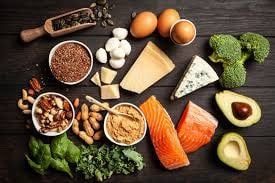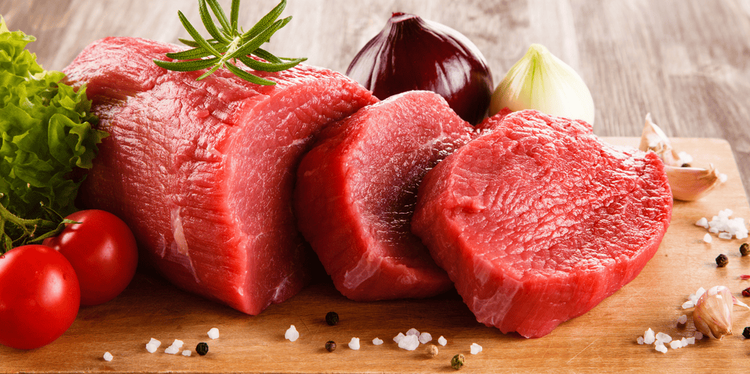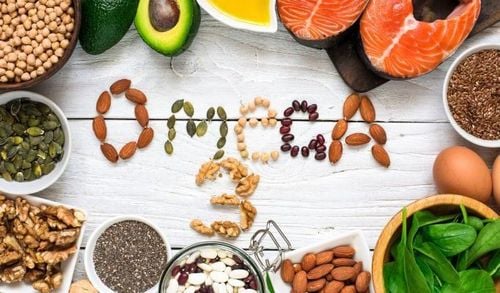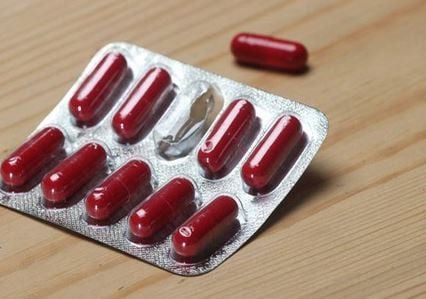This is an automatically translated article.
Experts' dietary guidelines recommend that you ensure the right amount of essential fatty acids, avoid trans fats, limit saturated fat to less than 10% of calories per day, and replace saturated fat with monounsaturated, polyunsaturated fats are healthier.
1. The role of fat in the human body
Currently, there are many types of fat, your body makes fat from absorbing excess calories. Some fats are found in foods, which are the source of the macronutrients that provide the body with energy.
Fat is essential for health because it supports several functions of your body. For example, fat must be present to dissolve some vitamins in order for the body to use these vitamins.
But certain types of dietary fat are thought to play a role in cardiovascular disease. In addition, because fat is high in calories, you need to balance the amount of fat with other foods so that you don't eat too many calories higher than necessary. If you eat more calories than you need, you will gain weight, and overweight and obesity have been linked to poor health.
There is a clear link between fat intake and heart disease and stroke risk. Diets high in saturated fats and trans fats (both "bad" fats) raise blood cholesterol levels, which contribute to clogged arteries, blocking the flow of oxygen-rich blood to the heart and brain. However, a very low-fat diet of about 15% or 34 grams of fat in a 2,000-calorie diet may not reduce arterial-clotting compounds in the blood in everyone. Most people are also unable to maintain a very low-fat diet for long. The American Heart Association (AHA) recommends that people eat 20% to 35% of their calories from fat.

Chất béo rất cần thiết cho sức khỏe vì nó hỗ trợ một số chức năng của cơ thể bạn
2. What are essential fatty acids, saturated fats, and trans fats?
Essential fatty acids (English name is essential fatty acids and abbreviated as EFA). EFAs are a type of good fat and are also essential nutrients; Sometimes called vitamin F. Essential nutrients are essential for life, but to get these essential fatty acids you need to get them through your diet because your body can't make them. out. EFAs are required for the important structure and function of every cell in the body. EFA increases the absorption of vitamins and minerals; Nourish skin, hair and nails; promote proper nerve activity; help with hormone production; ensure normal growth and development; and disease prevention and treatment. Fats (fatty acids) are divided into two main groups based on their chemical structure: saturated and unsaturated. There are three main types of unsaturated fatty acids: Omega-3, omega-6, and omega-9. Omega-6 and omega-3 are essential for the body. Omega-9s are not essential because the body can make them from other fatty acids. Unsaturated fatty acids are further classified as monounsaturated or polyunsaturated. EFAs are polyunsaturated, they include:
linoleic acid omega-6 fatty acid (LA), and its derivatives, gamma-linolenic acid (GLA) and arachidonic acid (AA) alpha-linolenic acid omega fatty acid -3 (ALA) and its derivatives, eicosapentaenoic acid (EPA) and docosahexaenoic acid (DHA). Saturated fat (English name is Saturated fat). This type of fat mainly comes from animal food sources, such as red meat, poultry, and full-fat dairy products. Saturated fats increase high-density lipoprotein (HDL or "good") cholesterol and low-density lipoprotein (LDL or "bad") cholesterol, which may increase the risk of cardiovascular disease.
Trans fat (English name is Trans fat). This type of fat comes from foods naturally in small amounts. But most trans fats are made from oils through a method of food processing (partial hydrogenation). These partially hydrogenated trans fats can raise levels of total cholesterol, LDL cholesterol, and triglycerides, but lower HDL cholesterol. This can also increase the risk of cardiovascular disease.

Chất béo bão hòa chủ yếu đến từ các nguồn thực phẩm động vật
3. How to eat fat right?
You should focus on replacing foods high in saturated fat with foods containing monounsaturated fats and polyunsaturated fats.
Try the tips below to reduce the amount of fat in your diet:
To avoid trans fats, check food labels and look for the amount of trans fat listed on products. By law in some countries, servings of foods containing less than 0.5 grams of trans fat may be labeled as 0 grams. Use oils instead of solid fats. For example, sauté with olive oil instead of butter, and use canola oil when baking. Increase the number of fish meals at least twice a week instead of meat, such as salmon and mackerel to get healthy omega-3 fatty acids. Choose lean meats and skinless poultry. Trim visible fat from meat and poultry and remove skin from poultry. Many processed snacks are high in fat, especially solid fats. Better yet, snack on fruits and vegetables. Remember that most foods contain a different type of fat, and the amount varies from type to type. Don't focus too much on ingredient details. Instead, focus on choosing foods that contain unsaturated fats, rather than foods that contain saturated or trans fats. For example, canola oil contains some saturated fat but mostly monounsaturated fat. This is a great substitute for butter, as butter contains some unsaturated fat but mostly saturated fat.
Vinmec International General Hospital with a system of modern facilities, medical equipment and a team of experts and doctors with many years of experience in medical examination and treatment, patients can rest assured to visit. examination and treatment at the Hospital.
Please dial HOTLINE for more information or register for an appointment HERE. Download MyVinmec app to make appointments faster and to manage your bookings easily.
Reference sources: webmd.com, mayoclinic.org
SEE MORE
12 Omega 3 rich foods 10 Omega-6 rich foods and things you should know Use Omega 3 properly













